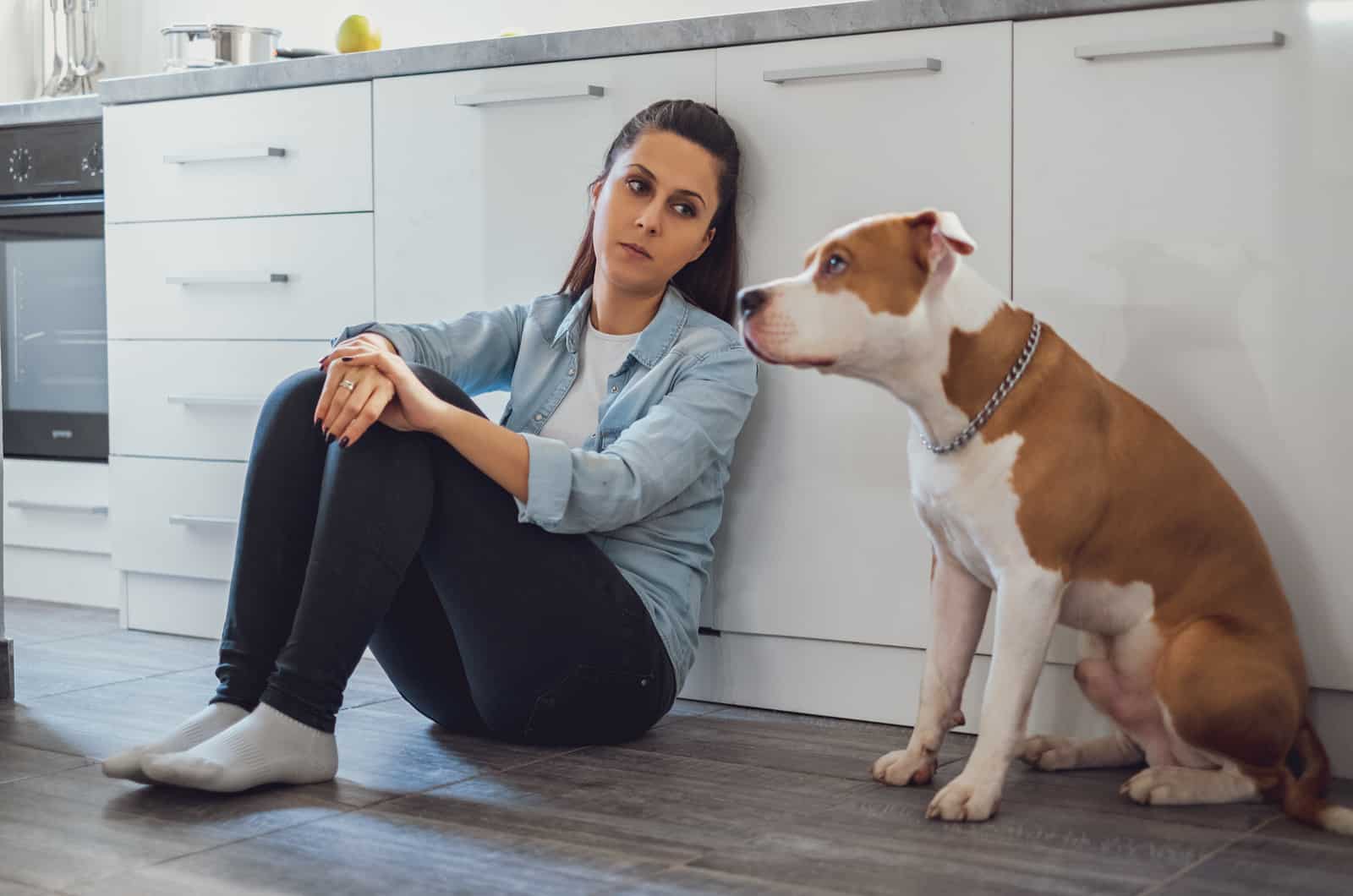Chances are that if you’re reading this, you have what’s known as a velcro dog. Wherever you go, your doggy friend is by your side, or under your feet. Whether it’s in the kitchen as you cook, or while you make your way to the bathroom, there they are.
You probably have mixed feelings about this. Yes, it’s cute, but it can also be annoying and inconvenient. So, why is your pooch so determined to cling to your side? And, what can you do to discourage this behavior?
We’ll go through the various reasons for clingy dog syndrome and suggest some solutions to the problem.
What Does It Mean When Your Dog Becomes Clingy?
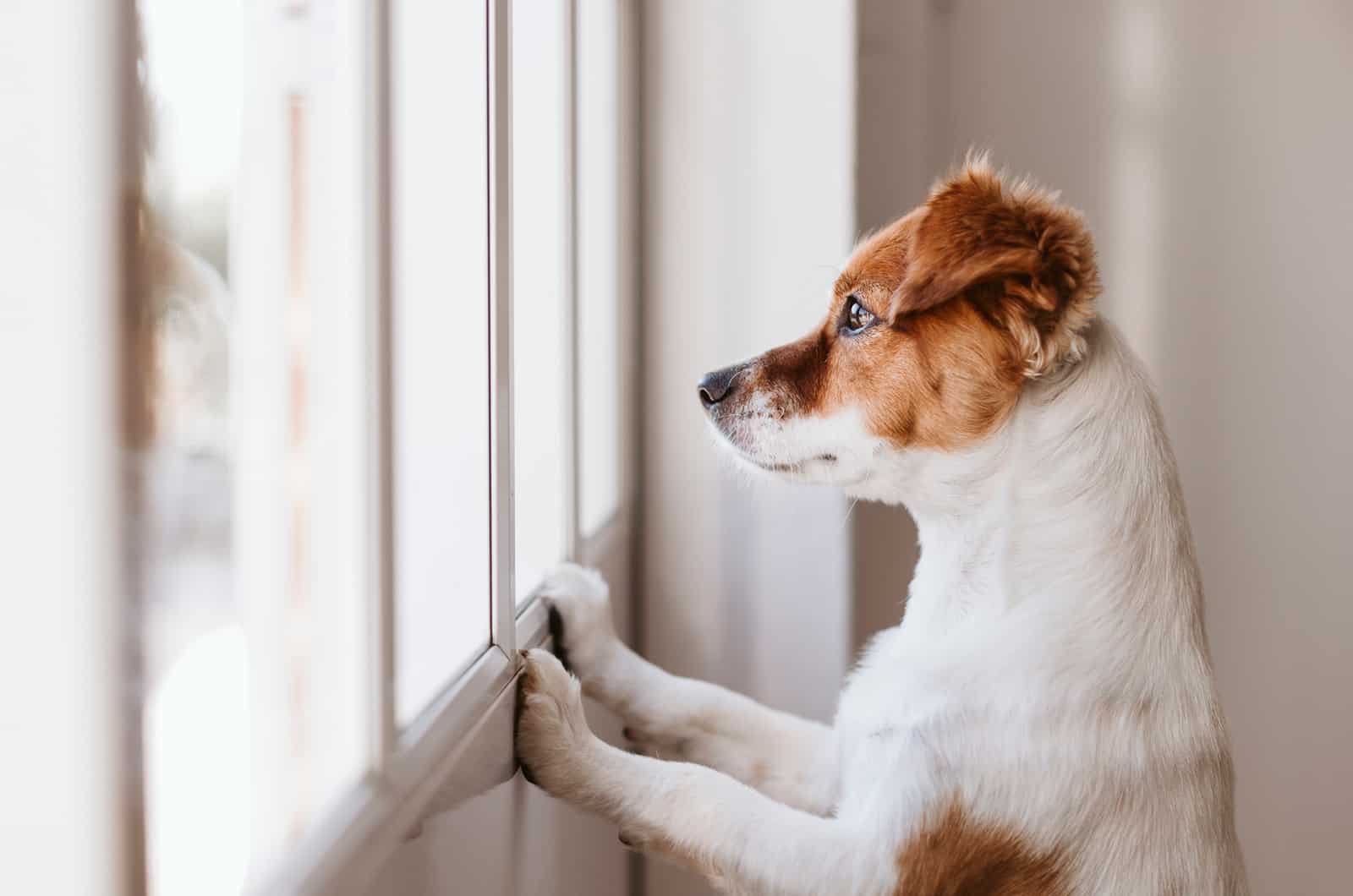
It depends on what you mean by clingy, and how quickly this behavior has been established. Since the earliest days of the relationship between humans and dogs, our canine companions have been bred for their loyalty. Some breeds, such as French Bulldogs, Pugs, Chihuahuas, and Shih Tzus were specifically produced as lap dogs for companionship. Herding dogs, like the German Shepherd, were bred to be loyal to one person above all others. Sporting dogs, such as Labrador Retrievers, Golden Retrievers, and Spaniels were made to be happy companions that will follow you faithfully.
As you can see, most dogs are designed to thrive on human companionship. It’s in their nature to be at least a little bit clingy!
Even so, they do need some independence for their own good.
Anyone who says my dog won’t leave my side is probably concerned about this behavior, or they may even be fed up with the constant attention.
Here’s the thing, though: you have probably encouraged this behavior.
We’ve seen that dogs naturally seek human company and thrive on it. You are the center of your dog’s world. They see you as the pack leader, and they will hang on to your every word. They’ll observe your body language and try to second-guess your actions.
You feed them, brush their coat, brush their teeth, give them treats, take them on walks, engage in fun activities, and give them plenty of cuddles. And, when they come to you for attention, you reward them.
It’s understandable, as you adore your furry friend. But, a lot of dog behavior becomes a habit through repetition. The dog learns that when it comes to you, it will be rewarded with attention every single time. Who can blame them for continuing to do so?
Many dogs will be naturally clingy, and this will gradually increase over time because we encourage it.
Puppies often form strong attachments fairly quickly. They latch on to the first person they regard as a replacement mom, and that’s great because you want to nurture that bond. Socialization and dog training are essential when owning a puppy. This will help them to learn the rules, and it will even help them to overcome some of their natural instincts.
As a general rule, pups should never be left alone for very long, but they might make a fuss when you do have to leave them. A dog trainer will show you the best way to deal with this, but we’ll go into the subject of separation anxiety in more detail further along.
So, most dogs can be clingy at times, but the real problem begins when clinginess dramatically increases, goes to extremes, or is accompanied by other types of behavior.
When this happens, then your dog is trying to tell you something.
My Dog Is Shaking And Panting, And Won’t Leave My Side.
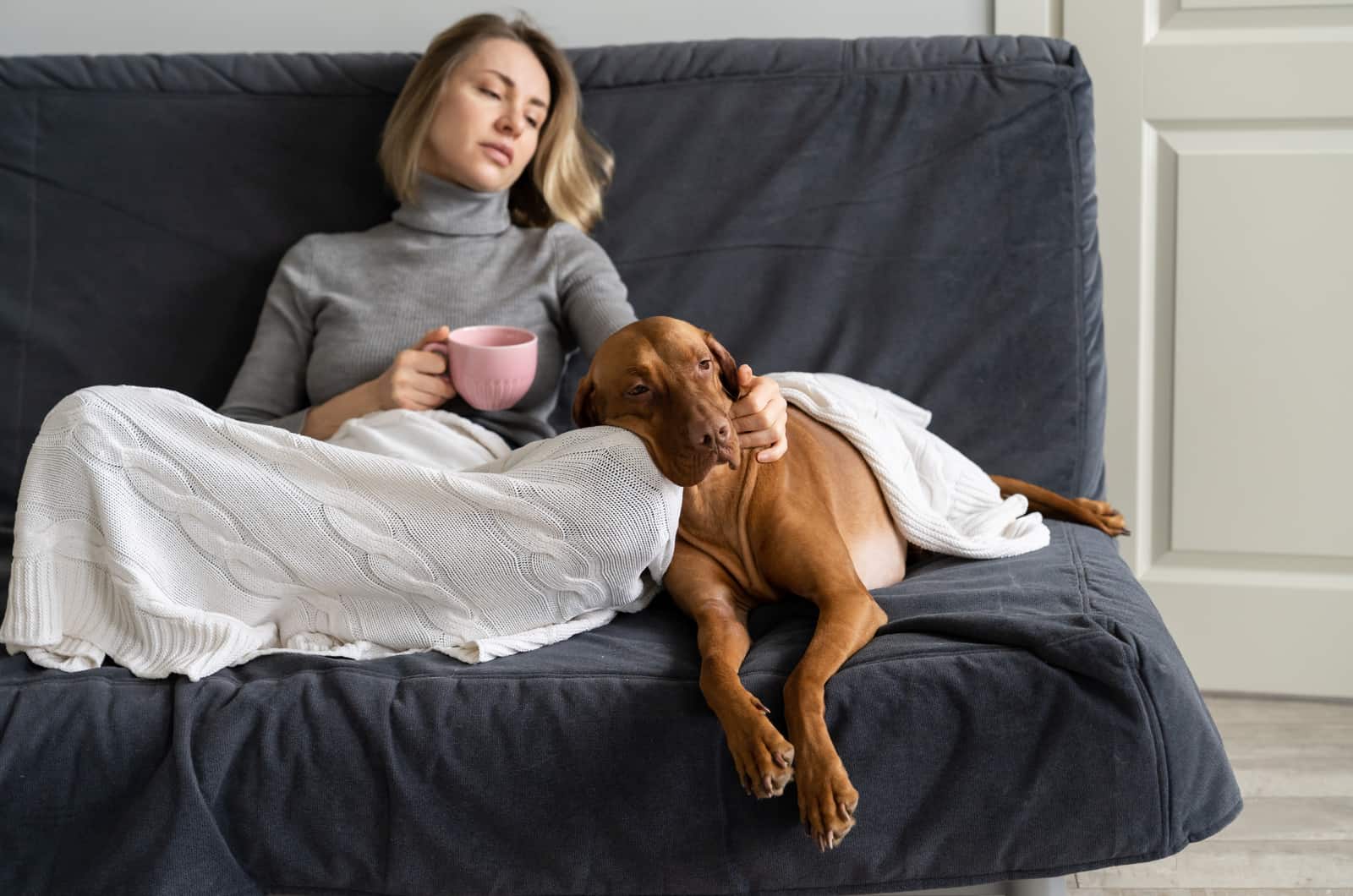
My dog won’t leave my side. There’s definitely a note of anxiety in that sentence. You’re concerned about your pup, and you want to know what’s wrong. And, if your dog is shaking and panting, then you’ll be seriously worried.
Here are some possible causes for this clingy behavior:
Fear
Many dogs are frightened by loud noises such as thunder, fireworks, sirens, babies crying, or even gunshots. Now, these are pretty obvious things, but they are always worth mentioning. You may not be able to hear them as your hearing isn’t as acute as your dog’s, but when you see them acting this way, try to listen out for any sound that might be spooking them.
Your natural reaction to this is to make a fuss, but this could add to the problem. If you remain calm and act normally, your dog will gradually learn to accept certain sounds. You could also mask some noises by putting on music or turning up the TV. You might even try playing with your dog to distract him.
However, if the problem is severe, you could ask your vet for some calming medication to carry your poor pooch through a tough period.
Anxiety
This is a big problem for a lot of dogs. They may be anxious about noises (as above), traveling, strange animals, pets, people in the home, or being left alone. They may also become anxious because of past neglect or mistreatment, but we’ll come to that later in our section on rescue dogs.
Separation anxiety is the most common cause of canine anxiety, and this is often accompanied by destructive behavior when the dog is left alone. It isn’t only a problem when you leave the house; your dog’s anxiety may get worse at night when you go to bed.
You could also notice some strange behaviors in your dog, such as him eating your underwear! This is just a dog’s way to tell you that he misses you.
It’s important to learn the symptoms of separation anxiety so that you can identify the problem:
• Behavioral issues (destructive behavior, urinating, or defecating in the house).
• Excessive whining, howling, and barking.
• Clinginess
• Constant pacing
• Panting and drooling
It’s clear that your best friend doesn’t want to be parted from you, even for a short period of time!
The main thing here is not to get cross. Harsh words and angry tones will confuse your dog. You need to reassure him and gradually get him used to your absence. Desensitization is the key to dealing with separation anxiety. You need to teach your furry friend that it’s normal for them to be alone for a while.
Think of all the usual actions you go through when leaving the house. Pick one or two of them and go through the motions. Your dog will pick up on this and probably pace around by your side. Once you’ve got your keys in your hand or put on your coat, go and sit down again. Do this for several days or weeks, mixing up the actions each time.
When you do leave the house, don’t make a big deal out of saying goodbye. And, when you return, wait a few minutes before greeting your dog. This might run counter to every pet parent instinct you possess, but it’s a good way of normalizing your absence and getting your dog used to being alone.
You might also want to try teaching your dog to stay while you leave the room, then reward him for being good when you come back. The first time only needs to be five or ten minutes, but you need to increase the length of time until your dog no longer fusses when you leave.
Before you go out and leave your dog home alone, make sure that it has plenty of exercise to use up some energy. They’ll probably take a nap while you’re away, which will eat up some of the time they’d usually spend missing you. You should get them some interactive toys to keep them busy, like puzzle toys filled with peanut butter.
Positive reinforcement is an excellent way of encouraging behavior modification. Quite simply, you reward your dog when they behave well, and you don’t reward unwanted behavior. Most dogs are pretty clever, and they will soon learn what to do!
However, sometimes you need a bit of expert advice. If you’re really struggling with your dog’s separation anxiety, then contact a dog behaviorist who’ll be able to help you.
Don’t despair if it’s you who has been Googling my dog won’t leave my side. There’s sure to be a solution!
Pain
When your dog is in pain, it might come to you for comfort and love. You do everything for them, so it’s only natural that they would seek your help with this problem.
Without making a fuss, gently check it over for any obvious sign of injury or any unusual lump, soreness on its skin, swollen areas, or hardness on its belly.
Check its ears and eyes for infection. Look inside its mouth to see if its teeth or gums are bleeding or damaged.
Either way, it’s a good idea to contact your vet. If you do find something wrong, you can tell the vet and they’ll perform their own examination to confirm the diagnosis. If you don’t find anything obvious, then the vet will thoroughly examine your dog to find the cause of its distress.
In all probability, it will be something that can be easily treated, and your best friend will be back to its usual, happy self.
Different dog breeds are prone to a range of health issues, many of which are treatable. However, in some cases, these diseases can be severe and even fatal.
If you are worried about your pooch, and are one of the thousands of dog owners saying, my dog won’t leave my side, then your fur baby might be in severe pain.
Watch for symptoms and, if possible, film them before contacting your vet. This will help the vet make a quick diagnosis.
Sickness
Just like when your dog is in pain, they may come to you when they are feeling under the weather. Clinginess, panting, and shaking are not good signs.
As we said in the last section, you need to observe your dog and check for any other symptom. The more information you have to pass on to the vet, the better.
You should check your dog’s gums to see if they are blue or pale. If you can, check their heart rate and temperature, and see how rapidly they are breathing. Are they coughing or sneezing? Do they have a runny nose? Do they seem off balance or disoriented?
Of course, vomiting and/or diarrhea are sure signs that something is up, but these are symptoms of many different conditions, so you might need some help to discover what’s wrong.
In most cases, it’s likely that your dog has a mild sickness and will recover soon, possibly with the help of some medication. You also need to be prepared for the possibility that this is something more serious. Even so, it’s vital that you stay calm as your pooch will pick up on your anxiety, which will only make it worse.
So, if you are worried, and you are saying my dog won’t leave my side, especially if they are shaking or panting, then it could be that your dog is feeling unwell.
Why Is My Dog Not Leaving My Side All Of A Sudden?
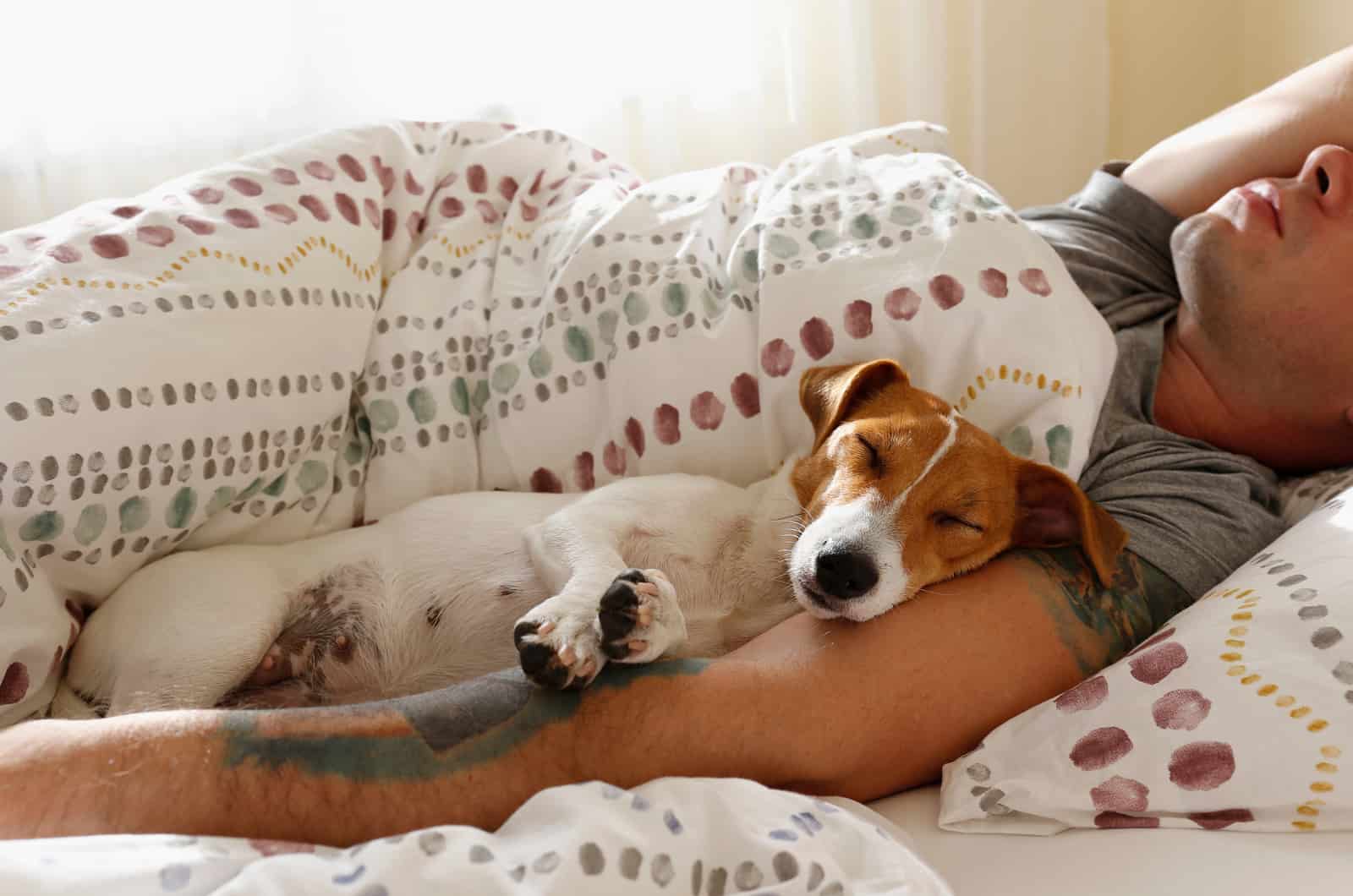
If your pooch is generally happy and doesn’t usually mind when you’re out of the house, but suddenly displays clingy behavior, then you need to find out what’s wrong.
It could be anything from the list above, so you’ll need to be observant and watch for any symptoms to guide you.
A sudden change in behavior can be unsettling and worrying, but it usually turns out to be nothing major. Separation anxiety is unlikely to happen overnight, but don’t rule it out straight away. Look for the obvious explanations first, such as fear and anxiety due to loud noises, or pain or sickness.
Once you rule out pain or sickness as the cause, then you’ll need to try to understand why your dog is sticking to your side more than usual. You can calm anxious dogs by giving them a safe space that belongs only to them. Crate training is great for this as you provide a quiet spot where your dog will feel secure. When they are feeling anxious, they’ll settle down in their crate until it has passed.
Make sure this space is comfortable for them by getting a good-quality dog bed, along with a blanket or two. Always ensure that they have access to fresh water, and let them eat there if mealtime comes around. Give them a few toys to play with, and let them come out on their own time.
If you have searched, my dog won’t leave my side, and you’re worried because it has happened suddenly, then check the list in the previous section for a possible cause. Also, always be sure to seek professional advice from your vet.
My Pregnant Dog Won’t Leave My Side
This is nothing to worry about. It’s perfectly normal behavior for a female dog that is carrying pups.
However, it does mean that you are about to become a proud puppy grandparent very shortly!
Pregnant dogs will often pace around, panting heavily. They might shiver, and they will probably lose their appetite. This is the first stage of labor, which can last up to 18 hours.
Your job is to make sure that the mother dog is as comfortable as possible, and that she has everything she needs. If you haven’t already done so, make sure that the whelping box is ready, and that it is set aside in a quiet area of the house.
You might be tempted to leave her to it once she starts straining as the first pup is born, but it’s a good idea to be on hand in case she needs help. There’s also a chance that she won’t want you to leave. If you try, then she’ll leave the birthing area and find you.
Each pup will take between ten and thirty minutes to arrive. However, if it takes an hour or more, then your dog needs emergency veterinary assistance.
So, when you say my dog won’t leave my side, it could be that she is about to deliver her puppies!
My Dog Won’t Leave My Side When I’m Sick
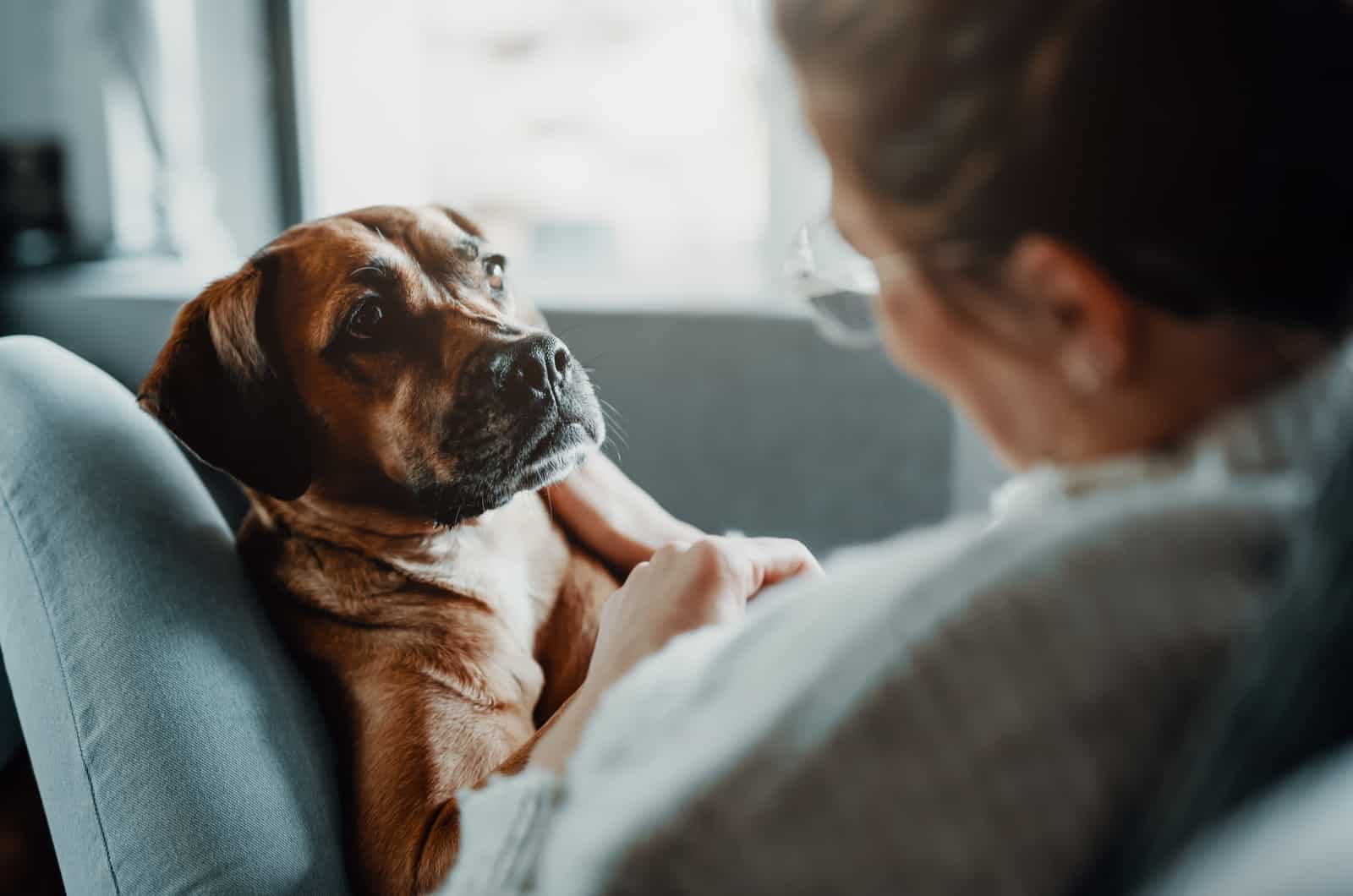
Dogs are sensitive creatures. They can read your body language and sense changes in your mood and atmosphere. They also have an incredible sense of smell that could alert them to any illness you’ve picked up.
Also, most dogs prefer a daily routine. When this is disrupted, it unsettles them, making them more prone to clinginess.
There’s a good chance that having your dog close by while you’re feeling unwell will help to cheer you up, which can only be a good thing. However, you may not feel particularly loving or affectionate when you’re really sick, and coping with a needy pooch can be annoying.
If you have other family members in the home, get them to take your place in dishing out love and affection for a while. If not, then you could engage the services of a dog walker to give you a break.
If you’re feeling under the weather, and you’ve been saying my dog won’t leave my side, it’s just that they sense that all is not well. You mean the world to them, and they get upset when you aren’t okay.
My Old Dog Won’t Leave My Side
It’s not uncommon for older dogs to stick by your side. As they get older, they’ll probably get more aches and pains. Sadly, they may also get canine dementia. Either way, they won’t always feel one-hundred percent, and they will come to you for comfort.
Old dogs also suffer from hearing and sight impairment, which unsettles them as their world becomes scary and unfamiliar. You might find them wandering or pacing the house, or sometimes standing facing the wall for ages without moving.
Throughout your dog’s life, it has relied on you for everything, and now it needs you more than ever during these challenging times.
The term ‘old age’ varies according to the size of the dog. Small dogs are considered senior at around 11 years, while for medium dogs, it’s 10 years. Large dogs are thought to have reached old age by 8 years of age, and giant dogs are seniors at 7 years of age.
Dogs are now living longer due to improved breeding methods and better healthcare. This is a blessing and a curse, as older dogs tend to suffer from a variety of conditions and diseases, including cancers, dementia, and arthritis.
My dog won’t leave my side, you say? It might be because it is getting to the end of its life and it just needs some extra love and support. Speak to your vet to see what measures can be put in place to make the dog as comfortable and as pain-free as possible. And, always be open to the option of easing your dog’s suffering through euthanasia if it is the kindest route to take.
Related: 15 Signs A Dog Is Dying: When Should You Say Goodbye?
My Rescue Dog Won’t Leave My Side
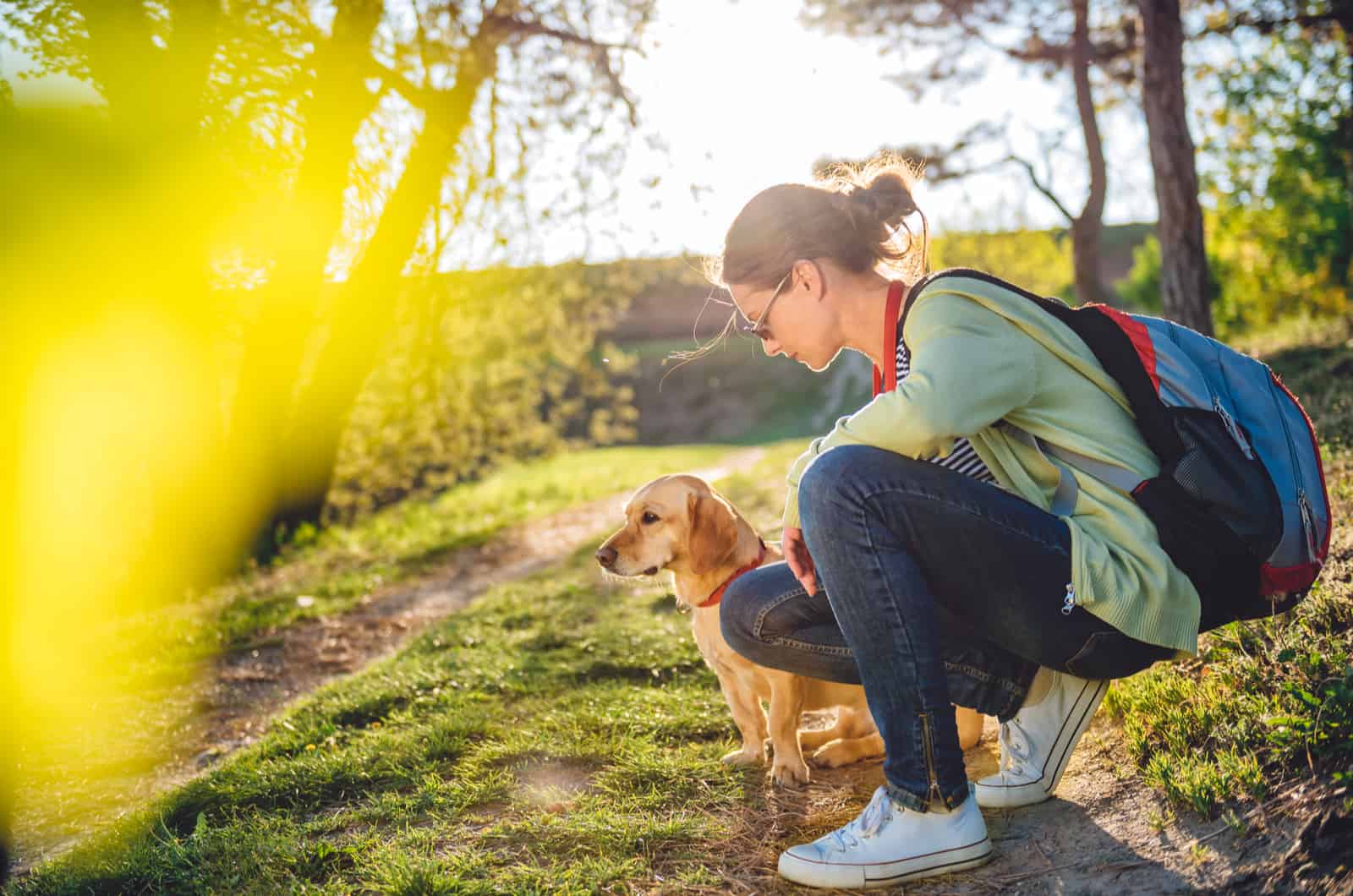
There’s something about rescue dogs that sets them apart. All dogs are beautiful, amazing creatures, but rescues are a little more special because they have experienced more in life, and they deserve more care and attention.
If you have a rescue dog and are one of those people saying my dog won’t leave my side, there are several reasons for this.
Your rescue dog may have been through a lot. Some rescues have been abandoned, neglected, or abused. Some have been adopted (sometimes more than once!) and then returned by people who changed their minds. They feel unwanted, unloved, and confused.
If you’ve adopted one of these poor pooches, it might be anxious about its new home. Rescue dogs need time to decompress and get used to their surroundings. There’s a good chance that your new dog fears that you’ll be sending it back in a few days. If it has quickly formed a bond with you, then it will be looking for love and reassurance.
The key thing here is that you should never adopt a rescue dog unless you’re fully prepared for the challenges. Taking a dog back to the shelter or foster home after a couple of days is cruel and unfair, and it adds to the dog’s anxiety and confusion.
If your rescue dog won’t leave your side, try to remain calm and quiet. For the first week or so, you should try to maintain a peaceful atmosphere and let the dog come to terms with its new home in its own time. Don’t fuss when it sticks by your side, but it’s okay to pet them a little. Once they’ve settled into the daily routine, you’ll probably find that they are fine.
Final Thoughts
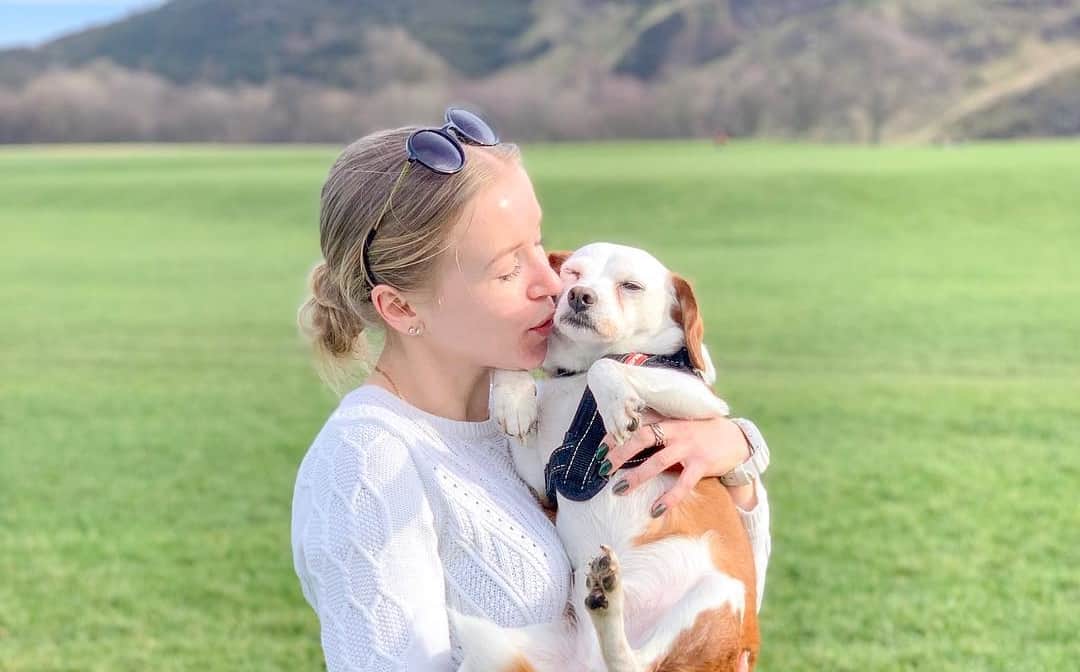
Photo from: @onedogandhisowner
We’ve looked at a range of reasons why dogs become clingy. First and foremost, it’s how they’re built! Dogs love to be with us, and that’s just the way it is.
Even so, it can be too much if you have a velcro dog. And, when this behavior progresses and becomes a nuisance, it usually means that something is wrong.
We now know that pain, fear, pregnancy, sickness, and old age can trigger clinginess. Anxiety is one of the biggest problems, separation anxiety in particular. Whatever the reason, it’s our duty to figure out what’s wrong and try to make it right.
There’s a solution out there for most of these issues, either through medication and treatment, training sessions, behavior modification, or simply by giving your furry pal some extra care in the later stages of its life.
In the end, dogs are our best friends, so why wouldn’t they want to be with us all the time? We’ve enhanced that instinct by breeding the most loyal, affectionate, and devoted dogs ever. And, we’ve encouraged ever-stronger bonds through our own behavior.
It’s only fair that we do all we can to make sure that they are happy.
